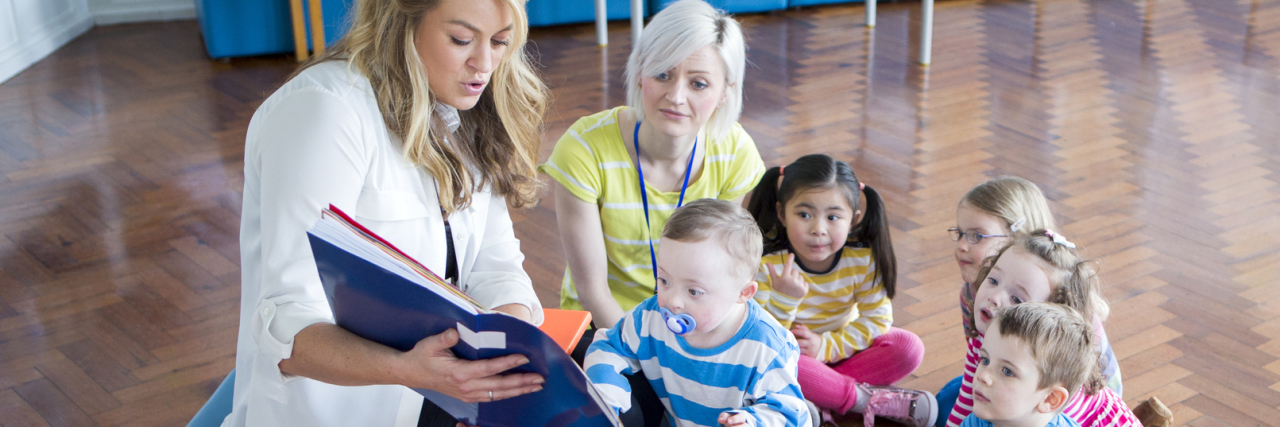What Real Inclusion of Special Education Students Looks Like
Include: to take in or comprise as a part of a whole or group.
Many schools promote the idea of inclusion. Often children in special class placements are inadvertently segregated from the general ed population. To combat this issue, many schools try to integrate special education students into group times such as lunch and recess. They also join in classes such as PE or art. Sometimes schools even create special programs for typical students to come in and interact with the special education groups. This is called “inclusion.”
However, when you take a closer look into these programs, you see how it can sometimes be unproductive. Many times the typical students don’t know how to interact with their disabled peers, and aren’t given proper guidance. Furthermore, the disabled students often aren’t given much guidance either. They may be asked basic social questions that they need a little bit of prompting to answer. Because of miscommunication, or the lack of communication, the students may try to interact less frequently. Even within a group setting that is mixed with students of different abilities, non-disabled children are more likely to revert to their own groups, within the group. This defeats the purpose of inclusion. It can actually be harmful in some cases. Many if not most disabled students want to interact with their peers on some level. It can be hurtful and defeating as a special education student to be excluded in a setting made for just the opposite.
Are the non-disabled students doing this on purpose? No, typically they don’t intend to cause harm or to be in exclusive groups. However, due to lack of resources, the two groups often don’t know how to interact, so they don’t.
Simply being allowed to sit at the same lunch table as typical students is not what “inclusion” should look like. Attending a few of the same classes, or riding on the same bus is not in itself, inclusion. Inclusion done properly has educators present to facilitate games and or communication. Proper inclusion looks like special education students engaged and participating in activities to a degree that they are able to.
As someone with autism, I’d rather sit alone than sit in a room full of my peers whose conversations and body language are exclusive. Simply existing with typical peers is not my idea of true inclusion. I want to contribute to the conversation; I want to be noticed and feel accepted. I feel that one way to ensure inclusion is done properly is to tell typical students what to expect. If you’ve never been exposed to it, different can be intimidating at first. Often, mainstream students aren’t used to medical equipment and the different ways someone might look or act. Tell them what to expect and how to react. Additionally, help the students with disabilities to engage their peers in a preferred conversational topic or game. Assist them in responding to peers. A child with disabilities may want to respond, but they don’t, because they’re unsure of how.
Inclusion is a great premise, and when done right, it’s fantastic for students! It teaches acceptance and understanding, and we certainly need more of that in our world!
We want to hear your story. Become a Mighty contributor here.
Photo by DGL Images / Getty Images.

